Twelve Postcard Views Of The Vanished New York Elevated
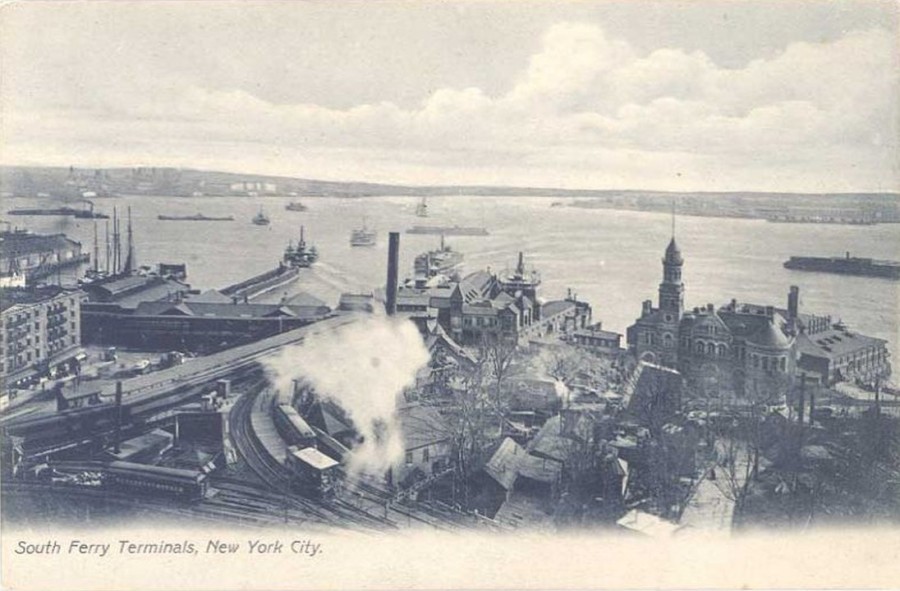
South Ferry Terminals, where all four of New York’s elevated train lines commenced and ended their travels
The most dramatic change in transportation in 19th century New York came with the building of the elevated train, known simply to generations of New Yorkers as the “el” or “L”. Here with 12 postcard views is a brief history of the New York Elevated.

Battery Park Elevated with the Washington Building on the right, and the Whitehall Building on the left.
The first elevated train line was the Ninth Avenue El which began service in 1869 as a single track line which was operated by a cable. The train ran from the Battery to 31st Street.
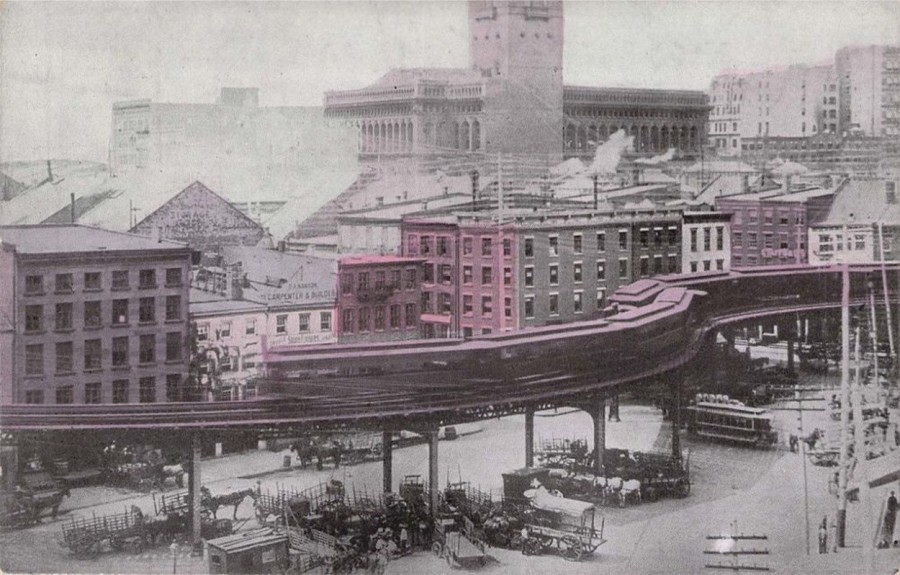
Third Avenue Elevated train at Coenties Slip. The building with the partially seen tower is architect George B. Post’s Produce Exchange. It had what was considered one of the most beautiful and grandest interior spaces in the city. (demolished 1957). Though this postcard was issued around 1905 the view is from 1891.
The first station was built at the intersection of Dey and Greenwich Streets. Unlike the later ornate elevated stations that made up the el system this station was rather simple, A narrow ledge was attached to the second floor of an existing building with a platform cantilevered out over the sidewalk.
By autumn 1870, the company running the Ninth Avenue Elevated went bankrupt.The assets (the railroad and three passenger cars) were bought for $960 by Francis Tows who represented the bondholders of the company. On April 20, 1871 the Ninth Avenue line was resurrected as the New York Elevated Company and they overhauled the line with new equipment including steam engines to pull passenger cars.
Dr. Rufus Gilbert, a pioneer in modern rapid transit formed the Gilbert Company (later renamed The Metropolitan Elevated Railway Company) to build elevated railroads on the east and west sides of Manhattan. Gilbert however lost control of his company soon after a stock market crash in 1873. New management saw to the building of the lines.
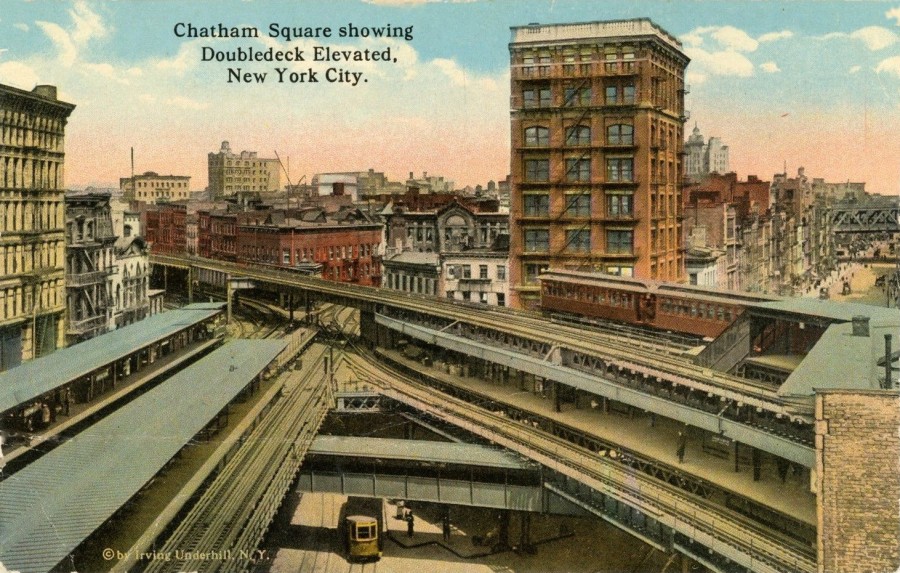
The Elevated at Chatham Square. With street space limited, the easiest way to expand the number of tracks was to build express tracks over the local tracks. This created a jumbled look, but many stations and lines were expanded in this fashion from 1913 -1920
The Sixth Avenue Elevated began service on June 5, 1878. The Third Avenue Elevated followed soon after, opening August 26, 1878 and the final line in Manhattan, the Second Avenue Elevated began service March 2, 1880. By 1880 the Metropolitan Elevated Railway and The New York Elevated combined to form the Manhattan Elevated Railway Company, run by financier Jay Gould. Gould left the day to day management of the company to his right hand man, Colonel Frank Hain.
For the next seventy-five years the el’s efficiently transported passengers throughout the city. In 1872 the Ninth Avenue Elevated had a total annual ridership of just 242,000 passengers. But their popularity quickly grew. By 1885 all four el lines combined for 103 million riders. In 1905 ridership had risen to 246 million and the els hit their peak in 1921 with 374 million passengers.
Between 1902 and 1903 all four el lines were converted from steam to electric. In 1904 the subway, constructed by the Interborough Rapid Transit Company, opened. By 1907 the combined annual ridership of all the els and the subway was over 547 million people.
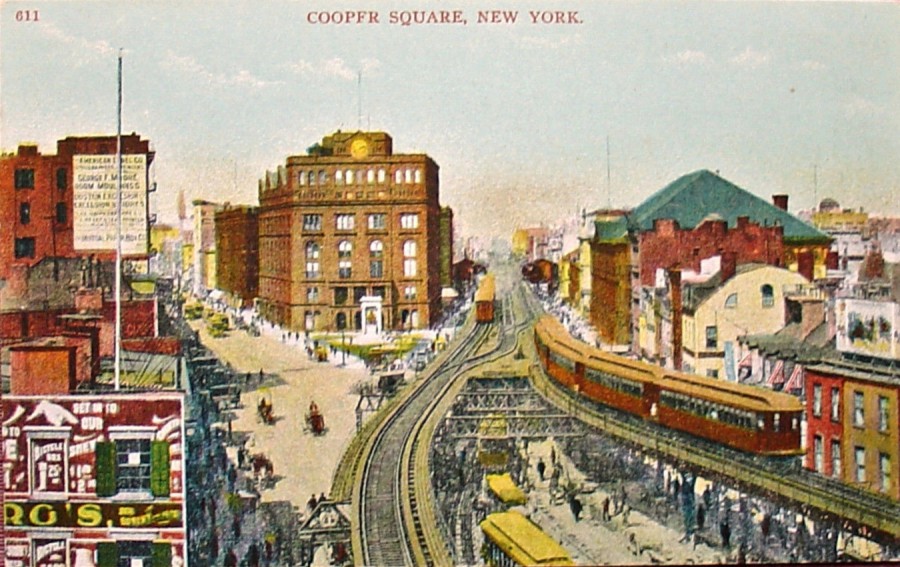
Third Avenue Elevated at Cooper Square. Cooper Union which is still extant, is the large building to the left of the tracks.
While many people loved the el, others bemoaned it as a blight upon the city. The structure and tracks darkened thoroughfares. The noise was deafening, especially for those whose apartments were literally feet away from the tracks. The el passengers could idly look out of the windows of the moving trains and see domestic life in all its phases, including many moments in apartments that were meant to be private.
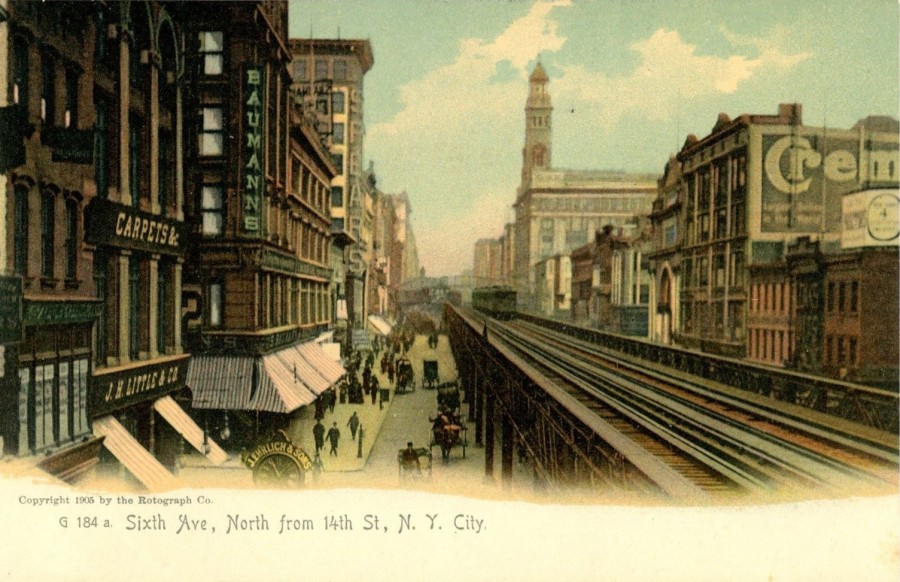
The Sixth Avenue Elevated seen looking north from 14th Street. At the turn-of-the-century Sixth Avenue was a main shopping district of New York called “Ladies Mile. The building with the tower on the right is Siegel Cooper department store, Department Store.
During the depths of the depression in 1932 the Manhattan Railway Company and its elevated lines were forced into receivership. The city took over control of the lines and in 1938 the Sixth Avenue Elevated was shut down and razed. The Ninth Avenue Elevated was the next to go in 1940 and the Second Avenue Elevated shut down in 1942.
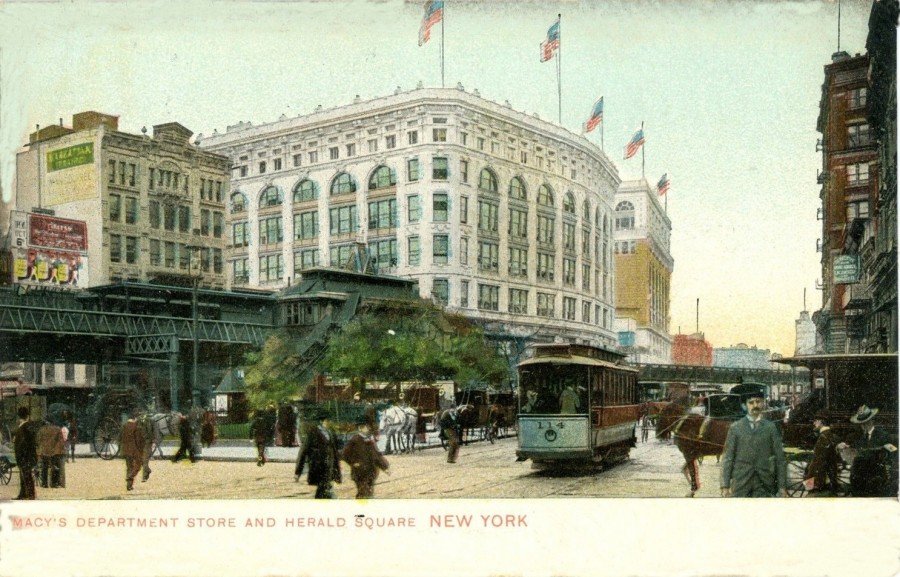
The Sixth Avenue Elevated looking north to 34th Street. The large white building with the flags is Saks Department store. Just beyond Saks we can see a glimpse of Macy’s Department store.
It would take another 13 years for the final el to come down. The last trains on Third Avenue Elevated ran May 13, 1955. By the summer the razing of the Third Avenue el had begun. By 1956 the el in Manhattan was just a memory.
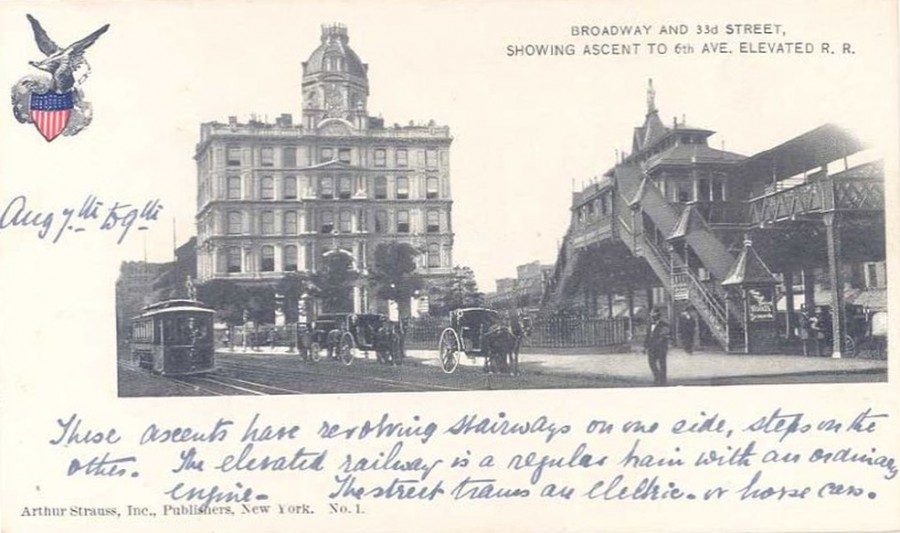
Sixth Avenue Elevated station looking south from 34th Street at the intersection of Sixth Avenue and Broadway. The building with the dome at the southern end of Herald Square is the Union Dime Savings Bank. This postcard provides an excellent view of the Gothic “gingerbread” stations that were built along the el.
Even though the original el’s in Manhattan are long gone, 71 miles of the New York City transit system are still elevated in Brooklyn, Queens and the Bronx.

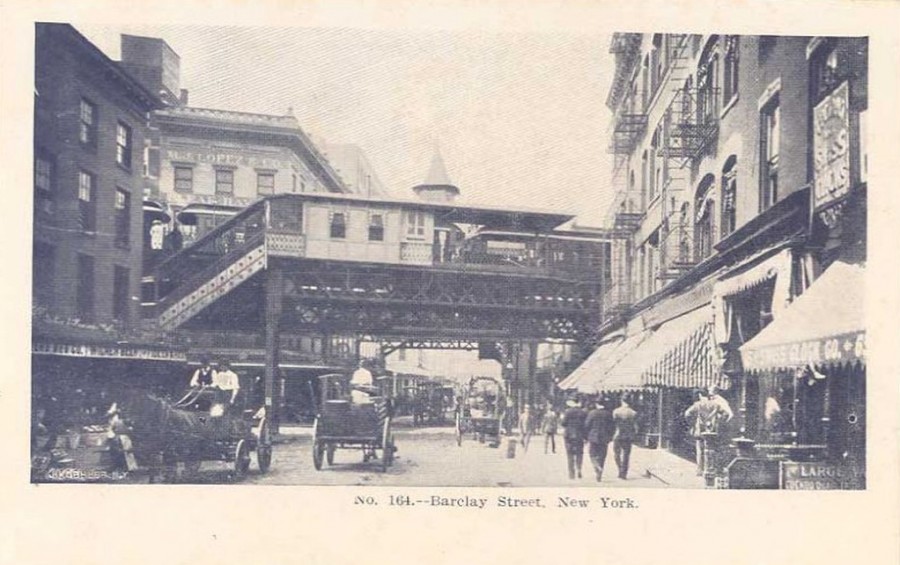
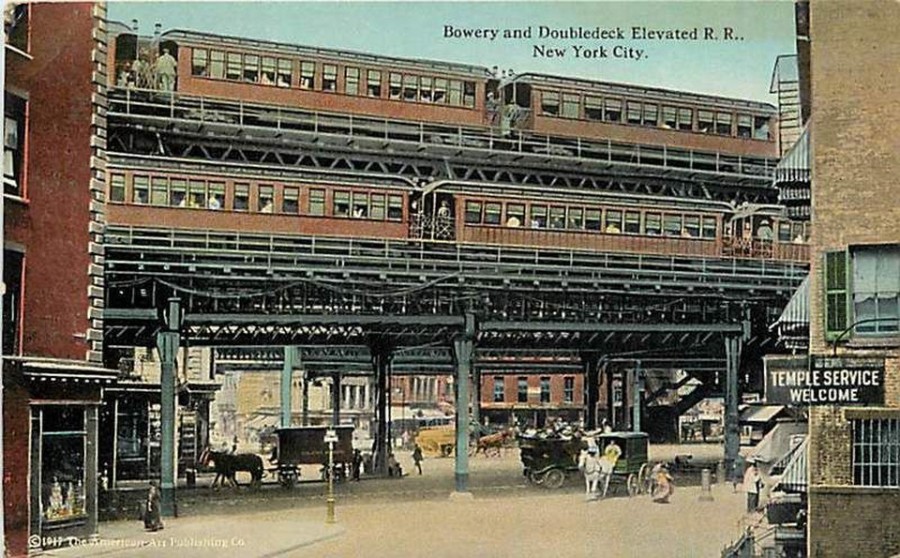
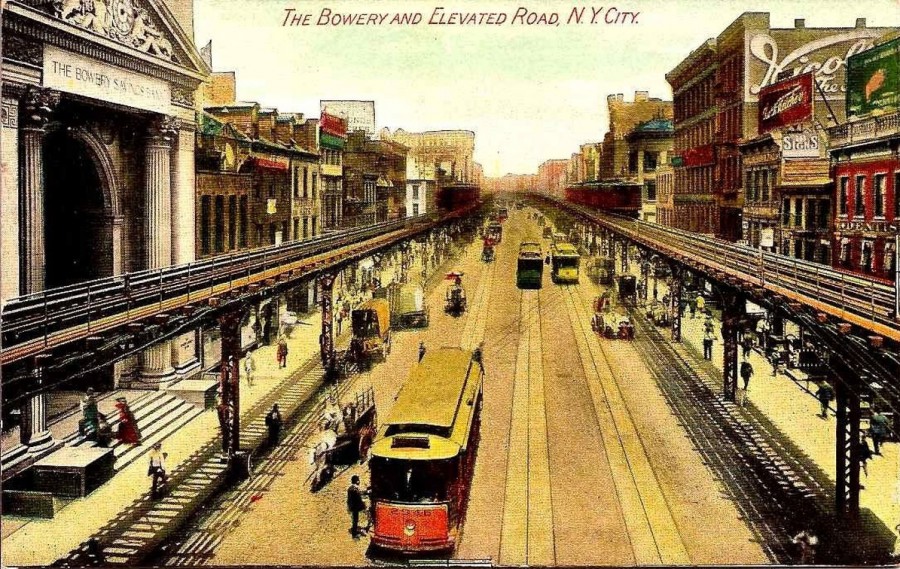
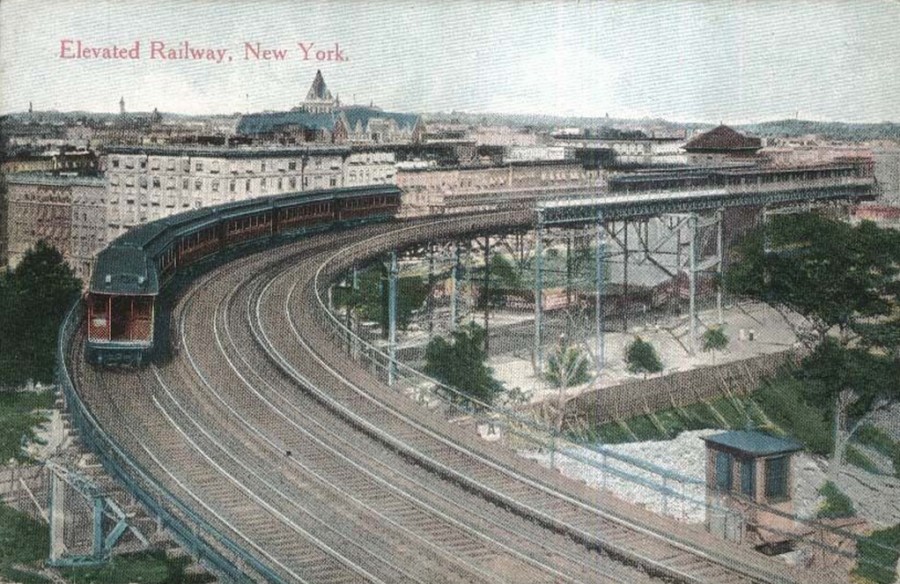



I have an article from November 10, 1954 that shows Dr Gilbert’s great grandson presenting a drawing of the el to the director of New York Historical Society, Dr. Vail.